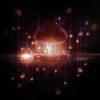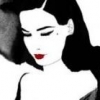Search the Community
Showing results for 'Dream'.
Found 7,591 results
-

Nagas Are Saturated In Qi Lore:
Disabled Not Broken replied to Disabled Not Broken's topic in General Discussion
Steven Spielberg stole your dream, and made it into a movie: "Cowboys & Aliens".... get a lawyer-- he owes you $...! -
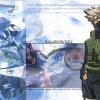
Nagas Are Saturated In Qi Lore:
Lindelani Mnisi replied to Disabled Not Broken's topic in General Discussion
This article reminds me of a dream i had, whereas dragons(who had the ability to transform to humans at will-but there was a crystal that if near them, they'd be stuck in human form, kind of like kryptonite-and back) were waring against cowboys/humans. The dragons were having a meeting and the eldest dragon told them that space is where the rest of their brothers are and that they should leave... -

a dualistic singularity and the natural manner(Wu Wei)...
et-thoughts replied to et-thoughts's topic in Daoist Discussion
Why try to do it when its just easier to just get it done and move on to better things to do... You are right... seeking to escape may be a fools quest that keep us bound without doing what need be done... If some folks only have their illusions and delusions lets help them change the nightmare into a divine dream and then help them bring about the dream into a divine reality... with the help and guidance of the divine... Humanity is part animal part spirit part mind and a bit more... and just need the right dance and music to play and learn -

a dualistic singularity and the natural manner(Wu Wei)...
et-thoughts replied to et-thoughts's topic in Daoist Discussion
FWIIW in an interchange much like this one I realized that the absolute meaning of a word is relative to its use then it becomes fixed and a universal truth... of course each time we use a word we determine its singular meaning (usually it is in line with previous definitions though it may or may not be the case). The notion that what we do now is the beginning of an eternal event makes sense with other stuff I hold. When someone writes a word it is used when somebody read it, it is used... two singular instances of using the word... now if the reader determines that the word means what the writer determined that word meant the reader gets what the writer sought to share... otherwise the reader just gets the meaning that the reader thinks to be... The gate in the fence... is it there to invite people in or to show them the way out? well I suppose that depends on where the people be, what side of the fence they be at... Passing the doorway will free those bound and bound those free... those bound to understanding will be freed into the delusion of being free... while those free of understanding (under the delusion of being free) will be bound to the understanding that allows them to be bound to understanding... while somewhat free ... to accept the truth or reject it... Can one escape any time one wishes to do so? especially when one would never wish to do so... this is analogous to the idea that one can be saved any time one wishes ... say by repenting and seeking forgiveness ... with the slight inconvenience of always postponing doing it... besides the gate hardly leads anyone to escape... its like dreaming of waking up but just moving from one dream to a different one... In many reals we will have singularities in some there will be dualities... as for this real we be in... I say we make it a wonderful place to be in and learn many wonderful lessons... and transcend the duality Indeed singularity/duality maps to Taoist Wu/Yo and wei would be action... I believe reality needs to shift from separate dualistic conception into an integrated singularity... The world faces global situations that require everyones cooperation... the contamination and radiation in one place affects and effects everything... it is time to realize that its not the in-group vs out group we are all one group ... and to sacrifice one is the sacrifice all and the benefit of one benefit it all... -
If you practice Chi Circulating/Building Exercises, and can trace your Tradition or Lineage back to it's older origins, this might be essential reading. If your Tradition/Lineage has Roots in China, Japan, or is part of the Egyptian Mystery Schools... the Nagas/Serpent are deeply embedded and saturated through out it's core. It is widely encompassing. It is Ancient &... Celestial ---------------- Also, take into account, the following Article I wrote: Egregores: An occult concept representing a "thoughtform" or "collective group mind", an autonomous psychic entity made up of, and influencing, the thoughts of a group of people. The symbiotic relationship between an egregore and its group has been compared to the more recent, non-occult concepts of the corporation (as a legal entity) and the meme. dao-jones.blogspot.com/2012/08/egregores.html ---------------- What follows is research from many varied sources I collected over the years, as a Magickian. It certainly is not the definitive, final word on the matter, and the sources are not exhaustive. However even if only 50% of this is accurate, it still has to make a thinking person, wonder... ---------------- Sumerian accounts tell of flying serpents and dragons breathing fire and how the kings of Sumer, going back long before the deluge to some 240,000BC, were "changelings" seeded by the union of the gods and humans. Sargon the Great, that famous ruler of the Sumer Empire, claimed this genetic origin and the very existence of "kingship" is reported very clearly to have been a gift of these gods. Equally clear is that they were reptilian gods, as in "The reptiles verily descend". And there are many references by the Sumerians to their gods as fiery, winged, serpents. The term U-SHUM-GAL, often used to describe Enki, translates as flying, fiery, serpent, The Indian epic, the Ramayana, tells the story of the serpent-god called Ravan who went to Ceylon. Ravan was said to feed on humans and drink the blood of his enemies Ceylon was a major centre for the serpent race, it seems. Ancient Chinese sources say it was a home of the Nagas, the "strange reptilian-like creatures", as they described them. They are reported to have traded with the Chinese, but interestingly it is said that they never revealed themselves. They left their products and a price tag, but stayed out of sight until the Chinese traders had departed." The entire culture of China is based on the dragon and serpent race. Here was a highly developed civilization thousands of years ago that influenced by the Sumer Empire. Even today their languages and writing are remarkably similar, as are their myths and stories. The great age of Chinese culture is reckoned to have begun around 2800BC -when the Sumer Empire was in full swing. Chinese history says that the first humans were created by an ancient goddess called Nu Kua, who was half dragon and half human. The Yih King, a very ancient Chinese book, says that the dragons and humans once lived in peace and that they intermarried and interbred. Ancient Chinese emperors were described as "dragon-faced" and looking like the dragon gods. Japanese emperors claim descent from these same "gods" and their ancient legends say those islands were populated by beings that came from the sky. The ancient Chinese believed that a dragon fathered the First Dynasty of "divine" emperors, and subsequently emperors claimed their right to rule because they were descended from the serpent gods. Their thrones, boats, and beds were designed with dragon symbolism. The ancient Egyptian accounts known as the Pyramid Texts speak of the serpent being both subterranean and celestial. Stories of flying serpents can be found in Egypt, as you would expect of an important colony of the Sumer Empire, and, once again, they symbolized immortality. Flying serpents were pictured taking the kings to the land of immortality in a star constellation in the heavens. One serpent symbol was the divine asp on the headgear of Egyptian kings and they used the fat of the crocodile in their coronations. The great ancient Egyptian city of Alexandria was called "City of the Serpent's Son" (Alexander the Great) and there they worshipped the serpent god, Serapis. He was known as the "Sacred Serpent" or "Fire Serpent" and from this comes the Biblical "Seraphim", the serpents associated with Yahweh/Jehovah. As a "serpent" colony, you would expect to find pyramids in China, and you do. One was some 1,000 feet high - twice the height of the Great Pyramid at Giza. This was encircled by others and some still survive today, including what is left of that monster structure. References to them have been found in Chinese texts dating back 5,000 years. The Chinese name for the ley lines or meridian lines of the Earth energy grid is dragon lines. Appropriate and understandable given that the reptilians exploit the energy in this grid, and built temples and structures at the major vortex points. Meridians mapped on the human body has it's origin here. In the Mahabharata In the great epic Mahabharata, the depiction of Nagas tends toward the negative, and they are portrayed as the deserving victims of the snake sacrifice. The epic frequently characterizes Nagas as having a mixture of human and serpent-like traits. Sometimes it characterizes them as having human traits at one time, and as having serpent-like traits at another. The nāgas also carry the elixir of life and immortality. Thailand Traditions about nāgas are also very common in all the Buddhist countries of Asia. In many countries, the nāga concept has been merged with local traditions of great and wise serpents or dragons. In Tibet, the nāga was equated with the klu, wits that dwell in lakes or underground streams and guard treasure. In China, the nāga was equated with the lóng or Chinese dragon. The Buddhist nāga generally has the form of a great cobra-like snake, usually with a single head but sometimes with many. At least some of the nāgas are capable of using magic powers to transform themselves into a human semblance. In Buddhist painting, the nāga is sometimes portrayed as a human being with a snake or dragon extending over his head. One nāga, in human form, attempted to become a monk; when telling it that such ordination was impossible, the Buddha told it how to ensure that it would be reborn a man, able to become a monk. Prajnaparamitaterma teachings are held to have been conferred upon Nagarjuna by Nagaraja, the King of the nagas, who had been guarding them at the bottom of a lake Nagas also referred to themselves as "Arya" or "noble". Nagarjuna, as the champion of Buddhist philosophy is traditionally portrayed with a sunshade or halo formed by a multi-headed serpent. He is called the Second Buddha, partly in tribute to his having established the Madhyamaka [Middle-Way, ie. neither materialist nor nihilist nor idealist] school of philosophy As there are serpents in Tibet, and nagas called Lu play a role in the symbolism of Tibetan Buddhism and in Tibetan mythology, so Nagarjuna is known as Lu-trub. The traditional life-story [Tibetan: namthar] of Niguma, the female companion of Naropa, begins during the time of one of the earliest Buddhas in a region covered by water ruled by a great Naga King. This Naga was an accomplished and compassionate disciple of that Buddha and gave his permission for the miraculous drying up the water for the purpose of erecting a great temple and monastery. A bustling city grew up around these which acquired a certain reputation, and came to be called The Land of Great Magic. This is the place that Niguma was born. Niguma developed the powerful tantric techniques referred to as the Five Dharmas of Niguma. The best known is called the Dream Yoga of Niguma. Her disciple, Naljor, is considered the head of the Shangpa Kagyu denomination of Tibetan Buddhism. Many examples of the naga association with Buddha appear on the walls and along an avenue leading to the temple of Ankhor Wat in Kampuchea (formerly, Cambodia) and also in Buddhist temples in Shri Lanka (formerly, Ceylon.) Kundalini depiction?... The serpent king Vasuki helped the gods to recover amrita, the elixir of immortality, from the Ocean of Milk by serving as the cord they wrapped around Mount Mandara in order to churn up the depths of the ocean. (Book I: Adi Parva, Section 18.) The Buddhist nāga generally has the form of a great cobra-like snake, usually with a single head but sometimes with many. At least some of the nāgas are capable of using magic powers to transform themselves into a human semblance. In Buddhist painting, the nāga is sometimes portrayed as a human being with a snake or dragon extending over his head. One nāga, in human form, attempted to become a monk; when telling it that such ordination was impossible, the Buddha told it how to ensure that it would be reborn a man, able to become a monk Among the notable nāgas of Buddhist tradition is Mucalinda, protector of the Buddha. In the Vinaya Sutra (I, 3) the Buddha shortly after his enlightenment is meditating in a forest when a great storm arises, but graciously Naga King Mucalinda gives shelter to the Buddha from the storm by covering the Buddha's head with his 7 snake heads Then the king takes the form of a young Brahmin and renders the Buddha homage. It is noteworthy that the 2 chief disciples of the Buddha, Sariputra and Maudgalyayana are referred to as Mahanaga. Some of the most important figures in Buddhist history symbolize nagas in their names such as Dignaga, Nagarjuna, and Nagasena. Huang-Ti or Huang-Di or the Yellow Emporer, is a legendary Chinese sovereign and cultural hero who is considered in Chinese mythology to be the ancestor of all Han Chinese. He was one of the legendary Five Emperors. He was mentioned in the Shiji by historian Sima Qian (145 BCE-90 BCE). Tradition holds that he reigned from 2697 BC to 2597 BC. He emerged as a chief deity of Taoism during the Han Dynasty (202 BCE-220 CE). He lived until the age of 100. Some legends say 400. He was said to have been born with a "dragon-like countenance" (looked like a dragon) It was claimed that he was conceived by a ray of golden light that entered his mother's womb from the Big Dipper constellation. The Big Dipper includes the star Alpha Draconis, the star of Set in Egypt. One Chinese legend says that when he died Huang Ti transformed into an etheric dragon and flew to the realm of the immortals. In China underground bases where the Dragon Kings live are referred to, as well as the lineage of humans from a race of 'Dragons'. ---------------- The ancient Chinese held the snake in great awe. This was shown by the fact that the ideogram for "it" is a striking cobra - "snake" itself is "worm" on the left and "it" on the right. Even in Tang times, "no it" was used to mean "safe". Reptiles were assumed to know the seasons, since they hibernate during winter and emerge in spring when humans need to plant crops, and the lines on the turtle's back were thought to be some divine diagram related to bagua, eight symbols corresponding to 1-8 (not 0-7) coded in binary, each placed as a side/corner of the compass diagram. (This is used on the national flag of South Korea, with yin-yang symbol.) Snakes were also thought to represent fertility - and turtles longevity - as well as to be related to lightening and tornadoes - which are even today called dragon rolling winds, a dragon with its tail touching ground and head in the sky, demonstrating its supernatural power. The tribes even scientifically concluded that dragons hibernate on earth during winter and rise into heaven in spring to throw lightening and thunder in summer. Further adding to the awe, snakes often live in graves, where they drive away rats that might otherwise damage coffins and corpses, thus hinting they were guardian spirits for people's ancestors. In particular, there are a number of things directly connecting snakes to the Xias: the name Yu meant "reptile"; his father is said to have turned into a bear/dragon/turtle after being banished by King Yao (but the father's name Kun is related to fish, indicating an earlier alliance of the fish and snake tribes arising from tribal migration; the bear/dragon/turtle is said to be three-legged, which has something to do with the sun golden bird being three legged but obscurely; the ancient ideogram for Yu is basically "it" with legs, perhaps a monitor lizard or, widening a bit, crocodile (another school of thought says it is actually two hands holding a snake;) one story says he emerged from his father's dead body - possibly due to some reptiles giving birth to live young rather than laying eggs. An alternative theory was a succession ritual in which the new chief kills the previous chief as a sacrificial offering to the gods - the "killing" or "live birth" might both be symbolic rather than physical, but there was a Tibetan ancient custom to kill the reigning king when his son reaches 13, probably a way for the tribal shamans, who proclaimed each chief and ruled with him, to maintain power through a juvenile puppet, pretending that the previous king, a god, had returned to heaven. Since one school believes that Kun/Yu were descended from the western White Horse Qiang tribe that originated near Tibet and moved east, the practice of regicide may have been real, not symbolic. The legend of Yellow Emperor riding a dragon to heaven sounds suspiciously similar, as does the chant recorded in the Classics of Mountain and Sea - Right after Zhuanxu dies he revives, hinting at a ritual involving the tribal chief requiring him to demonstrate superhuman capability, or possibly reincarnation in the new form of his successor. The story of Yu's son Qi obtaining nine verses from heaven probably involved a similar "go to heaven and return" ceremony. Even in the Warring States period, there was a legend of the ruler of Zhao State waking up after a long sleep claiming to have been up in heaven during the coma and a suspiciously similar one relating to the Lord of Qin about seeing the White Emperor (usually identified with Shao Hao from which Zhao and Qin both claim descent) in his dream during a long sleep. Some additional tidbits: There used to be an ancient ritualistic dance called "Yu steps" involving hopping with ankles touching, in imitation of the cobra's movements; and a few Xia legends exist concerning raising/riding/eating dragons, which shows a continuation of reptile/dragon legends passing down a succession of ruling chiefs from long time past. The stories often mention the chief wore "snakes on his ears", which may be related to the jade slit rings often found in ancient tombs. The parable of snake swallowing elephant hints at an expanding reptile tribe group conquering tribes with other totems. The name Chi Yiu is also related to reptiles: Chi is worm with a crown, and Yiu is a crawler form, but this time the reptiles were conquered. It appears that the tribe was mostly enslaved, but remnants escaped southwards to become the modern Miao and Li minorities, who even today retain some forms of snake worship or dragon legend. However, the spread of the reptiles seems to have started long before. A study of place names containing the word dragon or some close variant, or relating to personalities of the dragon worshiping tribes, and native legends and worship practices, indicates that the tribes originally arose in eastern china, consisting of a senior snake branch and a junior bird branch, but parts of the snakes moved west, south and north. In the west it merged with the farming/ fishing tribes on the Yellow River banks near Hua Hills, probably explaining the fish-dragon pottery figures and various legends of the golden carp jumping up the cataracts to turn into the dragon, as well as the horse/bull headed dragons seen in later graves. This appears to be the origin of the Divine Cultivator tribe, (whose name Shen Nong probably was originally Shen Long, Divine Dragon) part of which settled south of Yellow River later as the Zhuyong tribe, and part north of the river as the Gonggong tribe. It continued to spread to Shanxi to form the Xiyue (West Hills, often confusingly written as Siyue or Four Hills) tribe, which then further divided, producing among others the Curled Dragon tribe in which the name Hou Ji, supposedly the founder of the Zhou tribe, in some way figured. Also, one of the wives of Yellow Emperor was from the Pink Fish tribe, and another wife was from the tribe Xiling which also means West Hill, and Emperor Yan was supposedly conceived when lightening and a dragon's shadow struck his mother near Hua Hills. The Shen Long tribe had a marriage alliance with Ben Shui or Running Waters tribe, again showing a link to traditional fishing tribes. This appears to be the origin of the legend of Fuxi's daughter marrying the river god and becoming the goddess of the Luo River. (Another story says Emperor Yan's daughter drowned at sea and turned into the Jinwei bird, which keeps throwing pebbles into the water hoping to fill it to avenge her death, which sounds suspiciously related: a girl gets drowned and ends up with two legends, marrying river god or taking divine revenge. In another version, she came back to life on the mulberry tree but refused to come down, and flew away when Emperor Yan ordered the tree to be burnt. There is in fact a third related legend which will be discussed in Section 7. The drowning story may also reflect in part a ritual of virgin sacrifice to pacify the river god.) The tribe also made some further movement to the Shaanxi Wei river area and Gansu Long(dragon) Hills area, from which came the Zhou-Jiang alliance that ruled after the Shangs, and the nomadic Di-Qiang tribes that invaded northern China after the Three Kingdoms/Jin Dynasty periods. The name Di means "bottom" or lowland, hinting that they farmed instead herded; it appears related to the Zhou family name of Ji, while Jiang and Qiang are just the same word written and pronounced differently, and were derived from the ideogram for goat showing their nomadic origin. As mentioned earlier, some of the Qiang tribes may even have migrated eastward earlier, giving their chiefs Kun and Yu the opportunity to marry into local tribes in central/eastern China and even leading them. In the south the dragon/reptiles merged into various native hill tribes, though archaeological discoveries so far do not yet fit a coherent chain of inheritance. But the shape of the modern dragon appears to have been acquired starting in southern Manchuria, with the snake merging with mammals and birds acquiring horns, claws, sometimes wings, and in this augmented form becoming the ritualistic emblem shared by all the tribes coming under a common alliance. It is clear that, while ancient China had warmer climate than today, Manchuria was not a place where turtles and snakes could prosper. The people must have moved there from somewhere further south, perhaps before Yellow River started flooding because of silting (caused, as a matter of fact, by forest loss and soil erosion due to the farming of the Hua Hills people.) The later floods then cut their southern route and they began their own path of development. That they were linked to the eastern China tribes was shown by important people being buried with jade turtles in both hands, indicating that they too used turtle shells for divination. Quite possibly they later moved south again, became more martial, and conquered or merged with the Hua Hills people to emerge as the bear/chariot rider/Yellow Emperor tribe. Back in eastern China, the remaining reptiles and birds both intermixed and fought. Besides the Chi Yiu battle, in which Yellow Emperor appeared to have received some help from the birds, legends describe a series of monsters killed by Hou Yi the archer, probably indicating the bird tribe, skilled in making bow and arrow, defeating tribes with various animal totems, including the Ba snake. His tribe probably absorbed nine other bird/sun worshiping tribes, explaining the legend of his shooting down nine suns (which are golden birds). The 10 original tribes were supposed to have arisen from the organs of Nuwa after her death, a story which may later have transformed to the cosmic origin story of Pan-gu creating the world and its various objects. There was also a struggle for the throne between Gao Yang and Gonggong the water demon, who avenged his battle loss by smashing a column holding up the sky with a head butt (the broken sky was supposedly repaired later by Nu Wa - the story might reflect an earthquake/volcanic explosion leading to a mud/lava slide that blocked a river causing extensive flooding), and Yu's father stealing the magic soil from Gao Yang's store in heaven to build dykes and fight floods, resulting in his execution by Zhuyong the fire god. This has been variously interpreted: he was ordered to solve the flood problem and was blamed for failure, or he was expanding his territory into land reclaimed from floods without getting permission to do so (unauthorized use of divine soil - possibly a migrating tribe encountering opposition from current occupier). Other stories from minority tribes talk about a chicken taboo violation, a fearsome, human eating dragon woman killed by her victim tribe, and in a Manchurian version, a tribe seeking revenge for the death of a girl married into the neighboring tribe, in each case resulting in a war between the neighbors. Possibly the reptiles, more experienced with water and dykes, had a history of using flooding to defend themselves like the Dutch, and destroyed some enemy tribe or even their own relatives, intentionally or accidentally. In any case there was some sibling conflict that caused great destruction as well as permanently dividing the reptiles into different camps. Yu's actual hydraulic works, whether for flood relief, territorial expansion, or judging from the Ancient Book chapter, for river transportation, present yet another flood story probably occurring later still. From the history writers' judgement and the ethnographic spread, the "good reptiles" intermixed with other animals, producing the dragon, while the "bad reptiles" stuck to the plain snake, and were driven south into the swamps and hills. Whereas the "good reptiles" made sophisticated legends about their originating chiefs Fu Xi and Nu Wa, crediting them with various inventions, even repairing the broken sky, the "bad reptiles" merely believe the brother and sister survived the floods and married to produce descendents. In a very real sense, the dragon represented the mainstream of Chinese cultural development, since those believing in it also developed various other cultural artifices, while those who stuck to the snake remained primitive. The history of Chu state, which claimed descent from Zhuyong, says however that he was himself executed by Gao Xin for poor military performance against Gonggong. There is a further confusion between Zhuyong and Zhong-Li, the grandson of Gao Yang ordered to carry out the separation of heaven from earth, as well as separate persons Zhong the fire chief and Li the farming chief, and an alternative story in which Zhuyong was on the opposite side, actually a descendent of Emperor Yan and the father of Gonggong, who helped Emperor Yan to fight Yellow Emperor and Gao Yang in several wars. Maybe Gao Yang's claim of exclusive right to worship heaven caused a tribal rebellion among Zhuyong/reptile tribes, with some joining and others opposing? Despite his connection with the Gao Xin bird tribe and Emperor Yan bull/dragon, the name Yong contains the ideogram for "worm" indicating Zhuyong's descent from the reptiles, and explains why he is Gonggong's enemy in some stories and family member in others. The name Li is particularly significant: Chi Yiu's tribe is named Nine Li, and an expression used even in Zhou times to refer to ordinary citizens was Li Min. Possibly, Zhong and Li were sent to take charge of various parts of the bird, reptile and Emperor Yan tribes, resulting in the use of the name Li to refer to the southern tribes. The eight tribes of Zhuyong and the eight tribes descending from Gao Yang used the same set of surnames, indicating probably a migration, due to floods perhaps, from north of the Yellow River to the Chu territory on the south. Somewhere along the line they changed from dragon to phoenix as their totem, leaving trace in the legend of snake turning into bird. Their former territory was then taken by the Gonggong-West Hills tribes from the west and by bird tribes from the east, while they themselves took over the southern land of the Emperor Yan and Fuxi tribes that had already moved west. In our attempt to unravel of the confusing stories of the eastern tribes, it is also possible to pin something on numbers. What is the relation between the nine Li tribes of Chi You and the eight tribes of Zhuyong who is also known as Zhongli and his people (probably) the Li Min? If we imagine that one tribe, directly ruled by Zhuanxu-Gaoyang, was allowed to worship heaven, while the other eight were only allowed to pray to lesser divinities, we see a separation between heaven and earth. The eight tribes then rebelled or ran away southwards, both of which have evidence in the legends. Making something of names, Zhuyong's brother is called Wu Hui, which may be the same as Gonggong's alias Yonghui, and Wuhui's son was Luzhong, whereas Huilu happens to be an alias of Zhuyong. So there is a lot of family relations all confusingly lumped together. There was even a guardian demon of the Kunlun hills called Lu Wu, and a the astronomer/divinator of the Zhuanxu was named Kun Wu. It seems no coincidence that Zhongli and his descendent Xihe were both the astronomers as well as the fire chiefs; It was simply a job reserved for their clan whose members pass down these mysterious skills generation by generation, with different individuals doing the work in different generations, all confusingly linked together. Sima Qian's history says the Chu royal family descended from the Jiang tribe on the maternal side so that the Jiang pedigree from Emperor Yan got mixed up with the Gao Yang pedigree. But it is also possible that Zhuyong, meaning "fire priest", was just a generic name, not belonging to a specific person. It can even be that "Zhuyong killed Yu's father Kun" and "Zhuyong was Emperor Yan's helper in the war with Yellow Emperor" merely meant "fire was used to kill", whether in ritual sacrifice or in actual fighting, with some ceremonial invocation of the powers of the fire god. Taking all the confusing stories together, there is a recurring theme of central authority against reptile defiance. Several southern chinese minority tribes have a somewhat similar disaster legend in which the thunder god (akin to Gonggong) started a flood to destroy his brother's tribe, killing everyone except a brother-sister couple (akin to Fu Xi/Nu Wa) who ensured the continuation of the tribe (repaired heaven). Since the pair already understood that male-female sex was responsible for fertility, not totem worship, the disaster's occurrence could not have been very ancient. Whether a flood was the cause of the westward migration of the snake worshiping tribe (with the brother sister pair somehow getting left behind) is hard to tell, though the Classic of Mountain and Sea does have mysterious passages like "heaven turned water fountain, and snake turned into fish" which hints at this, but the migration must have occurred at least several hundred years before the war though it is hard to separate the two sets of flood stories and figure out which is which. It is also necessary to note that the name Xi refers to the sun, and various features of Nuwa indicates she was the moon/fertility goddess, so that their sibling relation may be really a cosmic legend, and the flood survival/tribe regeneration story can be just a mythical invention to explain incestuous human origins. (A possible connection with the Old Testament is discussed in the following section.) Two curious stories about Yu's wife hint at Xia's origin: He turned into a bear to dig canals with paws, and she was embarrassed enough to run away and then turned into a stone, but opened up to return his son. An apparent explanation is: he was born in the Yellow Emperor "have bear" tribe and married into the reptile tribe, but later was expelled; when he left he took his son, instead of letting the boy stay with the maternal tribe as was normal in a matriarchal society. The birth from stone story is also related the worshiping of stone fertility symbols in some obscure way. Yu was supposed to have started the practice of father-son succession, thus completing the transition to a patriarchal system, but the reptile totem from the mother's side remained with the descendants, and even got retrospectively attached to ancestors in later stories. The legends also say that Yu ignored his son's birth while rushing about with his work, which would however be just normal in a matriarchal society where the mother's tribe brought up the children and the father was just a peripheral figure. The son cannot inherit from the father in a matriarchal system because the father has no property in the mother's tribe while property from his own tribe must pass to its own members. Qu Yuan's poem asks "why did Qi (Yu's son) kill his mother?" reflecting a conflict between his and his mother's tribes over succession - his opponent Yi was the son of Chief Justice Ji Tao and assistant to Yu, whose descendents later became the Qin and Zhao clans that formed two of the states of the Warring States period. Since these two clans' legend of origin was the swallowed egg, Yi was also associated with some bird tribe, perhaps through marriage. Yi was credited with teaching tribes to dig wells, which may have been the real achievement of Yu and company, since tribes could then live further away from riverbanks in locations less likely to be flooded, and could build settlements in places where access to water used to be a problem. Wells have been found in 7-8000 year old settlements in eastern china so the "invention" might just be Yi bringing the knowledge westwards. Yu's father is said to have tried to block floods unsuccessfully by dyke building, and Qu Yuan's poems mention "As he did flood work, the owl and the turtle were joined", which appears to mean that tribes with reptile and bird totems worked together under him. Yu changed the method to cutting outflow channels which was more successful. A less well known story mentioned in a few books about the father was he built city walls and stored treasures/weapons inside, causing other tribes to be suspicious and rebellious; then Yu pacified them by razing the walls, burning the weapons and distributing the treasures. Whether building dykes and walls were two separate stories, or the same story that somehow developed two versions, is too obscure to tell. Perhaps flood relief was just a metaphor describing a philosophy of government, but was somehow taken for real, though a reverse mix up is equally possible. Again taking things literally, if the reptiles, seriously threatened by flooding, obtained help from their traditional bear-bird enemies, one could understand that the alliance would have been turbulent. The Machurian goddess temple mentioned earlier also had fragments of a bear-dragon statue and a bird of prey statue, confirming that there was already a mixing of the bear-reptile-bird totems occurring in 3000BC, with both eastern china tribes (reptiles and birds) and north-western tribes (bears and other mammals - besides the Divine Cultivator tribe bull totem, tigers and leopards were said to have fought Chi Yiu under Yellow Emperor; there was no mention of the goat however, so Jiang-Qiang was absent) intermingling in Manchuria. Some Hua hills pottery shows a bird catching fish motif, and southeastern sites yielded numerous jade carvings with a combination figure that is both a bird-man wearing a big feather hat perching with open wings covering two round eggs AND a monster face with hair (feather hat), thick brow (wings), big eyes (two eggs), goatee (claws), etc, again hinting at a tribal mixing. The monster face also relates to a legend about Emperor Yan's follower who continued to fight after his head was chopped off, using his nipples as eyes and navel as mouth, which was probably a burial ritual for headless fighter corpses. A similar monster face called the taotie appears in later Shang bronze vessels, sometimes with a human head in its jaws, probably a guardian animal eating a demon. Zhou books mention a greedy monster with the same name, which appears to be their guess of its meaning. The two eye-eggs could even represent testicles, and the whole figure a fertility sign. The feather hat appears to relate to the "descent of the phoenix" described in the Yao section of Ancient Book: after nine verses have been played, the tribal chief dressed as the phoenix appears, to be worshiped by vassals dressed as various totem animals. The phoenix later lost out to the dragon however, and was reduced to a symbol representing high class women. While an important tribal and shaman emblem, the dragon was merely on par with the tiger and the phoenix at first. A person like Zhuge Liang could be nicknamed "crouching dragon" without risk of censure for lese majeste. It was much later that Imperial China elevated the dragon into a royal monopoly and standardized its appearance, with five claws. By then its origin had disappeared into historical mist, and we can only catch glimpses of it by strenuous efforts delving into the ancient manuscripts and archaeological evidence. ---------------- Etymology: The word ''Naga'' Means "Serpent" in the Vedic Sanskrit. The Hindu Naga Serpent Gods of India are mention in the "Upanishad Texts", Nagini for the feminine. Indian Serpent Ruler, son of Kadru The Nagas ruled India as well as a substantial portion of Asia from Arabia to China and the South Pacific, as well as the Indian Ocean region.There are a few definitions of the Naga but the origin is the Naga serpent, or the Naga's a race of serpent like people from Hindu and Buddhist mythology. The word Naga comes from the Sanskrit and 'nag' is still the word for snake, especially the cobra, in most of the languages of India . The Naga is referring to the people who have full access to the Kundalini energy. Kundalini being a serpentine force, to be honored with being called a Naga is to be wise as the serpent. Matthew 10:16 verse "Be ye therefore wise as Serpents, yet gentle as doves." Note that the Snake (Serpent Spirit) has been a symbol of wisdom since the metaphysical story of Adam and Eve. It's the wise Serpent who offered them the fruit of knowledge. Also attach to the wise Nag serpent is eternal healing, mystery, magical power, and holiness throughout most of the ancient non-western world.It's the represents the power of life death resurrection. It's used in everything from sex potions to drugs to kill cancer, life and death. .Its poison can kill and used to heal, is shed its skin as a symbol of resurrection. It's a symbol of all the four elements water, air, earth and fire. The wise serpent lives in water and also in the earth, the poison is fire and the movement in "S" form is the same way waves move across air. Its symbol is used today in medical field. Other words related to the 'Naga' or' Nag': Naga-raj: King of cobras Naga-rjuna: A Baudha Saint Nag-eena: Gem of Ring, Diamond, great Nag-endra: Lord Shiva Nag-esh: Lord Shiva, Lord of snakes Nag-mani : Lord Krishna, Snake's Gem Nag-pal: Protector of Snakes Nag-pati: Master of Snakes Nag-raj: Sheshnaag, Snake king Nag-ulan: Witty Nga: (Naga) which means "Serpent Queen." It is a title of the Egyptian Queen; this title was given to those who have mastered the Uraeus power. When you see an Egyptian headdress which has a snake on the top of it, you are looking a Uraeus crown. Seen in most hieroglyphs as an upright form of an spitting cobra, used as a symbol of sovereignty, royalty, deity and divine authority in ancient Kemit. Uraeus is obvious reference to the Kundalini energy. Naga-saki: A Japanese city destroyed by an atomic bomb in 1945, by the U.S. and it means"Serpent Spirit" or "Serpent Life-Force." Nig-gina: is the Mesopotamian word for "Justice." Nega Negast: An Ethiopian word which, means Serpent King of Kings. The Kebra Negast: also called the "Book of the Glory of Kings of Ethiopia," has been in existence for at least a thousand years, it contains the true history of the origin of the Solomonic line of kings in Ethiopia. Negus: (King) The Kebra Negast is often referred to as the Rastafarian Bible. It was handed down from generation to generation orally, in Rastafarian and West Indian culture. It contains a mix of the history and traditions of the Ethiopia Orthodox faith. It documents the descent of the Ethiopian royal lineage from King David to Emperor Haile Selassie. Nag Hammadi: is an ancient Aramaic and Hebrew scripture which means "The Serpent Black Guide." Origin of the gospels and you can study them today if you research anything on Gnosticism. Abe-Naki: "Father Serpent", a name of an Indigenous people in America or the so-called Native Americans. Nuga-rmar-ta and Nago-mina: establishment of civilizations in Ghana and Mali that existed in the area before 1000 B.C.E. ---------- Side Note: The Magical Kunlun and “Devil Slaves”: Chinese Perceptions of Dark-skinned People and Africa before 1500 http://thetaobums.com/topic/24339-the-magical-kunlun-and-devil-slaves-chinese-perceptions-of-dark-skinned-people-and-africa-before-1500/ The first chapter of this paper seeks to explain how Chinese people perceived these black slaves by analyzing representations of people with dark skin in fictional and nonfiction sources from the fifth century through the Song dynasty, tracing the evolution of the meanings and connotations of the term kunlun This mysterious and poorly understood word first applied to dark-skinned Chinese and then expanded over time to encompass multiple meanings, all connoting dark skin. This chapter examines the meaning of the term kunlun in nonfiction before and during the Tang; fictional tales about magical, superhuman kunlun slaves from the Tang fiction compendium Taiping guangji ---------- http://dao-jones.blo...in-qi-lore.html
-

a dualistic singularity and the natural manner(Wu Wei)...
et-thoughts replied to et-thoughts's topic in Daoist Discussion
Hehehe hahahah ROTFLOL... considering those definitions it turns out that the absolutists isn't an absolutist and a relativist is who knows what... thanks for making me laugh in a good way... Indeed we have not defined what a "relativist" and an "absolutist" are... Personally I thought that it was rather evident ... and realizing a different possibility made me ROTFLOL... My understanding is that : The Absolutist = uses/hold/recognizes absolute truths-ideas-notions-beliefs - The Relativist = uses/hold/recognizes relative truths-ideas-notions-beliefs - For the absolutists there is a truth for the relativists theres isn't a truth (hey I just got an important insight a new understanding that I find quite useful and enriches what I hold... thanks for your participation and contributions). To be rather practical about this lets look at examples of statements and categorize them as absolute or relative... - Examples of absolute statements There is one truth There isn't one truth The truth is relative The truth isn't relative THE right way or no way Short definition I am a realist Reality (I just realized that there are some singular statements that may be better to categorize differently like 'What be' and maybe short definition) - Examples of relative statements - My understanding of what you are saying here is... - your understanding is - My way or no way. - That depends on what one believe holds - whatever works - illusion I see that your response following the statement I made goes of into a different direction than what I intended: - if there is any consolation both the noble and the charlatan use the slogan "I tell the truth"... sought to expose the fact that the same statement can be true if the noble uses it and can be false if the charlatan uses it... I was indirectly pointing out that the slogan "be all you can be" could be this or that depending on who used it. sometimes its impossible to know if the statement is true or false this or that... and that its a bit irrelevant what it happened to be so long as what follows makes it be congruent with the statement... Another example that I could had used is: "May you reap abundantly what they sow"... It could be a blessing or a curse! Here it depends on the recipient... You certainly are correct that "If anyone takes the time to tell me what they are about to say is the truth" It would tend to flag the statement and make some wonder about the veracity of that and other statements... Sure some people will lie every chance they get... just as some people will tell the truth every chance they get... telling their stories! The stories each tells, tell quite a bit about the storyteller... Rather than just assume something to be, I wonder and ponder considering it being the case and it being something else... looking for the singular path that in every case I choose to embrace...be it a dream be it for real always choose the better way to be... be it right be it wrong always validate what it be... Though nowadays I am tending to always ensure what be right be right... and cultivating what be right... -

A Brief Guide to Taoist Empty Mind Meditation
Tibetan_Ice replied to Aaron's topic in General Discussion
Hi Aaron, I have some questions, if you don't mind. What are the benefits of practicing this form of meditation? I've read in so many places that just sitting in emptiness is not a good thing to do as it does not cultivate insight. How is this practice different from that? Do you go through the four form jhanas (bliss, joy, happiness, equanimity) and the four formless jhanas: infinity of space, infinity of consciousness, No-thingness, Neither perception nor non-perception and finally Cessation? I'm thinking that your definition of 'emptiness' is not the classic interpretation of Buddhist Emptiness. Stillness is not the realization of emptiness. In my interpretation of the realization of the Buddhist 'emptiness', the realization of emptiness is the same as when you realize that you are in a dream, that you can fly, walk through walls, create objects or do anything you can think of or desire. The realization of emptiness in real-life is exactly the same. What are the effects on your regular daily life? Do you have satori moments afterwards? Have you gained any siddhis or powers? After you discovered that emptiness is not true emptiness because there is the "I" that is watching, have you ever turned your attention around and tried to dwell in the "I"? For that is the only way to not have an "I". If 'you' are watching something, then it is still dualistic. And if you did reverse the flow of attention backwards to the "I", does the journey which brings you closer to the "I" bring you through the heat sheath, the bliss layer, the golden light, the nonconceptual stage and finally the infinite expanse that is the "I" which seems solid as a rock? Just curious.. TI -
How to see that which you enjoy to see You can't see what you want to see because it is here; not there, but here. You're already there. Don't you see it? Or do you see it. Whatever you do not see is what you do see. They are both dependant on eachother. The not seeing of it is the seeing of it. As soon as you do not see it, so you shall see it. Because you know what you do not see, and the knowing of what you do not see is the knowing of what you do not see. Where are you now? What do you see not? Do you not see your dreams? Are you not dreaming right now? Is this not a dream? If this is not a dream, what is then indeed a dream? Am I a dream? Are you a dream? Why do you see it not? Is it because you don't want to see it? Or is it perhaps exactly because you do want see it. Do you want to want to see it, or do you want to see it? Are you enjoying your view already? The more you enjoy the view that you see, the more you shall see that view which you enjoy to see. It is a paradox which is very fun for yourself to be revealed. We live with passion, for ever and ever, and this one moment is the passion. That is all that there is. You don't have anything else. What you see now is what you see now. You want to see that which you enjoy. Do you see it as if you enjoy it? Or do you see it as if you want to enjoy it? Because what you see now is what you say it is. It shall remain here for ever. You shall never see anything else. If you do see something else, then that is the same of what you see now, its just that you enjoy it and describe this enjoyment in a diffrent way. If you enjoy what you see right now, then you shall see more of that which you enjoy to see. Do you want to see that you want to seew what you enjoy. Or do you do want to see that you see what you enjoy to see. You see what you enjoy. It is what you see right now. It is that which you enjoy. Thats all there is to it. There is nothing else to add to this communication on the subject of enjoyement and seeing. Untill the next time. Rahtuali
-
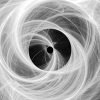
Immortals and their magical powers
eye_of_the_storm replied to Cheshire Cat's topic in Daoist Discussion
I think of Neo (matrix) - once you begin to understand the true nature of reality things become a lot more flexible. The waking up from the dream...type of thing In my dreams I can fly I can't see why this should be any different haha I think It takes imagination + clarity/focus + 100% faith -
You are welcome, resonant111. I do not want you to become obsessed with this issue. Just watch carefully your reactions after an Orgasm. Stress is one things that can cause a worsening of POIS symptoms. I used to have POIS symptoms for more than a week after an O. My mind was literally crippled by after-orgasms effects. I tried to ignore those feelings, but they were overwhelming, so I could not. At the end, The only possibility was total abstinence, and it was not a 100 per cent solution, because a wet dream wreaked havoc on my system again. If you are very sure that you have POIS, then let me know about it. Best regards and cheers up!
-
Wait a minute before you penalize me, i must mention that i have had slight visions of the future, but only in my dreams so far. Like this other time i saw a girl in my dream i had never met before, she was writing something in her dairy and the next day at the supermarket i see her leaning against the wall and recognise that its her and that same week i had a dream where in the middle of it a large crowd of people were dancing in the street like a flash mob and the next day i hear the same song at a hardware store, and it wasnt a new song. It was the song celebration by soul train, or something. While we're on dreams, there was this one time when my big brother fell asleep in the sitting room playing playstation and i was asleep in our room and then i was woken up by him, but it wasn't him cause even though my vision was blurry i couldn't see his face. Its as if he didnt have on. So he or it wakes me up by shaking me, i blink a few times then he's at my door calling me with his hand and not by talking or anything. I fiqured he wanted to show me something he did on the playstation so i get out of bed and walk out the bedroom but i find he is nolonger at the door, he/it disappeared. When i get to the sitting room i find my big brother fast asleep(waking him up is harder than moving a mountain). So i eventualy wake him up and we go back to bed. So what faceless and voiceless bieng woke me up?
-
In many traditional systems it is believed that the deceased loved ones only show up in one's dreams for important reasons. In many cultures the names of the deceased family members became taboo, the belief being that the souls should not be kept tied to the places where they lived and people they loved because this can interfere with their departure to where they need to go. One was supposed to honor them at allocated times (e.g., taoists create an altar with the tablets bearing the deceased relatives' names and offer food, drink and incense at some regular intervals) but not think too much of them and not name them aloud (until much later after their departure) so they don't take it as being "called." Finally, if someone's health was poor, a deceased close relative in a dream was thought of as "coming for them" and calling them. So, if you want a traditional approach to such dreams (and, no, they are not related to any energy practices whatsoever and happen to non-practitioners and practitioners of anything alike), there's a few things I would suggest: think of following the taoist custom of feeding the ancestors. It is thought of as safeguarding their well-being in the other world and their help to their living posterity. If it's not done, they may be disturbed and are thought of as being able to cause their posterity some trouble; make sure your health is fine -- a check-up maybe? if these dreams persist, there may be a feng shui problem with the graves, which can interfere with the peaceful rest of the deceased. The worst kind is where any water after the rain, or (worse still) ground waters are flowing into the burial site. But there can be many other problems too. If an altar does not help, try finding a yin feng shui practitioner to assess the situation with the graves. Good luck!
-
I just had a dream where my Dad was in it, he was the center of my dream. Apparently it was his birthday in that dream and i gave one last hug. This isn't the first time ive had a dream whereas a deceased loved one appeared. I've had one of my grandma, one of my grandpa(her brother), one of my babysister and one of my mum im sure bt i can't remember the one of my mum i just have a strong feeling that i have. The dreams always occur out of the blue, way long after the funeral and i always wake up and cry. Why? What's up with those dreams?
-
Disease, Health. You see a difference. Keep dreaming and you will only be healthy in a dream. Running from pain, chasing pleasure. Yawn.... I though this was a Taoist forum?
-
The game of being has a 'time-out' box where beings enter not to be... the dreamless dream. Not-being involves accepting 'what is not' as being and holding "what is" as not being. 'Dualistic' notions of not-being reflect being within the dream. At all time Beings being none-beings remain within the not-being being unaware of being until the moment that what is impossible becomes possible and the impassable passage be passed. At any time a being can choose to wake up from the dreamless dream though thats impossible for a none-being to accomplish, for those who think they can't do it will not do it even if they could do it. For those who know, I have little to add for those who do NOT know I will say: - the man who refuses to see, and wishes not to see, sees without seeing where as the blind man, sees without seeing Some see 'seeing without seeing' as the key to see and to not see some know the elephant as the elephant! - "A ray of light suffices to enlighten and disintegrate darkness". Lies just disintegrate in the presence of the truth... and those who know and recognize the truth can experience all the possibilities and realities with a single thought (feeling understanding act) though they do not have to experience it all to know it all. I would like each and everyone to know the truth and be enlighten... and keep on watering the plants and chopping wood... What would you like be? Can a finite temporary experience include it all while also transcending the finite temporary experience? The enlightened know from experience the singular valid answer... believers know the stories told until they experience a singular transcendental enlightenment instant ... of course there are all sort of storytellers with all sort of captivating lines and all sort of motives... which do you seek to cultivate and contemplate.
-
- 1
-

-
- duality
- singularity
-
(and 3 more)
Tagged with:
-

NOTE: Forum software upgrade - August 2012
et-thoughts replied to sean's topic in Forum and Tech Support
Hurray! Like the upgrade thus far... SO you posted that it took a bit longer than expected ... when in fact it took what it took and nothing more nor nothing less... I used to say "Expect the best and be prepared for the rest"... now days I sort of state "be it a dream be if for real always choose the better way"... this upgrade seems to be along the ways of the better ways... thank you for all your efforts -
End Game Gold star White rose In my head Snow blows No heaven above No earth below No opponent ahead No ruler in tow Empty chair Empty days Empty book Untold ways Stopping short Fitting in Going along Blazing within Ruthless life Ruthless art Ruthless dream Female heart Assessing chaos In a single turn Ruthless compassion Does not burn The Commentary Gold star White rose In my head Snow blows Gold is most precious; with superior conductance and exuding a warmth and lustrous beauty like no other metal the more it is worked and polished; gravitas. Progenitor of a world, a star symbolizes realization of dreams, desire, accomplishment, magic, cosmic knowledge, power, consciousness, energy, light. White is purity, death, emptiness, openness, the extreme of polar axes, sharp distance, vertical inaccessibility. Self-evident, sincere, pervasive florescence, unrivaled variety, a rose beheld visually incomparable, yet can dissemble at a touch in its fullness and delicacy. Wild snow, free-form spontaneity, impersonal, crystalline, pristine, individually unique despite relative similarity, viciously cutting or pillow-soft in turns. Adepts have these psychological attributes and accomplished postures of attitude. Those who aspire to enlightening being do not cling to anything; free, independent, unpredictable, inaccessible, untrammeled, serene, unperturbable. Such a one is capable of killing buddhas and demons alike. Shining with a clear light and a freshness and purity of uncompromising intent To unhesitatingly see all the way through. No heaven above No earth below No opponent ahead No ruler in tow This stanza is an ancient ritualized proclamation uttered by a great general on his way to war after having walked in procession on the left side in honor of death and having accepted the ceremonial battle-axe from the emperor. This is its operational dictum. Entrusted with the means to victory, the army is a power unto itself. Its effect arrived at by deception only to save the lives of the population and eradicate the corrupt. An encapsulation of a force of intent within the inconceivable perspective of nonbeing This is the strategy of selflessness whether hidden in defense or attacking from the heights Assessing advantage and weakness in oneself and other objectively and responding impersonally Neither seeking honor nor avoiding blame; acting only when advantageous and dismissing emotionalism. Victory depends on other; to win without fighting is best. Empty chair Empty days Empty book Untold ways The key word in this whole passage is Untold. This is how to relate to emptiness as is. Complete reality is just this. This has never been told in numberless eons. If you know it, but you are not even one bespoken to say there is no saying it, this is reality as is, and you are as free and untrammeled as your original face before your parents were born. Before a single thought, this is emptiness, suchness as is, unattributable. So it is not something. Nor is it something without attributes. It is unattributability itself. This is the real. Why? Because reality as such having no attributes is your selfless aware nature; one must still take the forward step oneself, without hope or regret. This stanza represents living one's life as such. What could be more natural? And who could ever tell of it? From this point on, the song delves into the realm of the Untold. Stopping short Fitting in Going along Blazing within Outside of traditional mental hygienics as a means to save energy, when one has passed through the veils and tasted the scenery of singularity and has planted the seed of immortals in the homeland of nothing whatsoever and the Golden Flower opens, one gains access to the workings of the Virtue of the Receptive. Sudden realization is a most fortunate event because the compulsion to act unawares is forgotten forever. In its stead is the remnant of nonbeing, aglow, blazing within your breast. Having passed through the Mysterious Female once, one retains, nurtures, develops this power of immediate acquiescence to further enter the mystery. So one uses the power of Receptivity to step over eternity, hide one's light, enter the marketplace and walk with hands open in order to meet the world fully without holding anything back. This is advance practice. Taoism calls this setting up the furnace and cauldron again, performing tasks in everyday ordinary situations unbeknownst to anyone. As before, it isn't really doing. It is selfless response according to the situation. The Art of War states that "victory depends on the other". Immediate acquiescence is selfless adaption. As before (in preliminary alchemic operations of advancing and withdrawing the fire), one follows the course of the yin convergence and withdraws the fire at the first sign of the killing energy of polluted yin energy and gathers potential, sealing it securely. Follow desires and go along with situations to introduce guidance; then stop short as the killing energy arises. Every cycle of yin and yang requiring operation of yin convergence. You do this as before: by not-doing in withdrawl. Over and over and over, for absolutely no conceivable reason, you follow the cycles of evolution in ordinary situations without speculating in potential inherent in the polluted energy of created worldly situations. You must realize there is no hope involved, either before or after; whether giving or taking; expanding or receding, and no one knows. Selflessness is not a matter of caring for people in a special way— it is the way of adapting to circumstances according to people's capacities and neurosis. One uses the fuel inherent in the situation itself. The energy itself dictates your response, which is immediate; not requiring a dust-mote from outside. Ruthless life Ruthless art Ruthless dream Female heart So taking this to the limit of the limitless, adapting to conditions before and after; only then letting the world go on without you without entertaining hope, without misgivings, immovable, seeing each situation through, you find out what really happens. Even though you go along with conditions, you neither invest in nor speculate in outcomes. Having stepped over eternity, time, in terms of situations, is plastic. It is truly up to oneself to stretch or prolong times. One simply does not have any capacity for such things as hope— as hope is an utter time-sucker dependent on outcomes. Outcomes are for those who are invested in selfish reasoning. Selfless awareness completely annihilates time, hope, craving, outcomes. Hope in what, for what? This is not a matter of hopelessness either~ this is the power of the Mysterious Female, transcendent. Ruthlessness is in terms of the world's perspective preferring outcomes. End-Gaming is not concerned with them at all. The End Game has no such preference. The End Game has absolutely no relationship to the world in terms of created energy other than using the world's own momentum to meet conditions. There is no sense of separation because End-Gaming already has tacit accord with the real within the false. No outside energy expended; effortless, spontaneous, selfless. Those who, lacking faith, confused and thinking there is actually something to be avoided or denied in terms of lacking working relationships with suchness, emptiness, potential, or else juggling puny moralistic judgements of right and wrong, stumble past the real time and time again; only degrading themselves and taking misery for pleasure, never in their lives knowing an end to it. Seeing through conditions without denying characteristics is giving oneself without holding back. Even as the world seduces you relentlessly, and you can respond appropriately, still you do not crave desire or results, neither pandering to the future nor second-guessing the past~ there is only life, art and dream of an empty, open, ruthless Mysterious Female heart. Assessing chaos In a single turn Ruthless compassion Does not burn Which brings us to the last stanza of this song. Where not a single word applies. ed note: delete "the" from "there is only the life, art and dream…"
-
I've been practicing Kunlun now for a little over 2 months. I couldn't wait for the book so I drove 3 hours to meet an apprentice. I barely knew anything about the practice and literally had just heard about it, but felt deeply this is for ME. During the first few minutes I felt nothing and thought the practice was mumbo jumbo. Then my legs began to convulse. After a few minutes of that my body began winding. It has been a beautiful and powerful experience for me. The night of my first day practicing at home I had a beautiful dream with Max. Some nights after I was in pain. I woke up in the middle of the night still in sort of a trance. A voice told me to move my head in a very specific way. I did and the pain immediately went away. Instinctively I responded to the voice, "thank you Kan." A few weeks ago I called Max for help using "Kunlun AT&T" when someone brought something into my home with negative attachments. I had children visiting for the week, so I was more concerned for them than I was for myself. After calling him, I felt at peace. I woke up in the middle of the night with a being in my room. It was a feminine energy. She told me she was protecting the children. Additionally, my visions and dreams all around have become far more vivid and meaningful. I say this to say that MY experiences were all beautiful. After reading many of the fear-based comments herein, that could change if I've allowed my mind to weaken to others' perceptions of things. I will not allow that to happen though. I have the opportunity to practice regularly in a group with other Kunluners, as well as access to an apprentice. Solo practice is great, but I gain much more in a group. I am looking forward to the seminar in September. I can only imagine the energy level. Regarding the book, my brother managed to get a hold of an old book (red cover) on Amazon. I purchased the new book almost the moment it became available. There seems to be information that is in the old book, that has not made it into the new book. And much valuable information in the new book that is not in the old. Even if one already knows Kunlun it is an excellent read. I think it far better written than the older book. As I was reading it I couldn't help but to think, "wow, this guy is REALLY smart!" I say buy it if even just for the jewels than practical knowledge of Kunlun. And yes, the holding the ball pose is a bit different in the book than I learned from my apprentice and in the older Kunlun book. I can agree that this path may not be for everyone. I would recommend anyone who is in a state of fear to first address those fears before delving into any practice that will take you to the next level... especially with something that will catapult you to the next level like Kunlun.
-

I HAD A DREAM! Of a Monk?He spoke to me!
eye_of_the_storm replied to DalTheJigsaw123's topic in General Discussion
Cool dream I would suggest finishing that book? Dreaming is one of my favourite things So interesting+ Bizarre! haha I'll share one monk related one that you sparked the memory of... The Dalai Lama gave me 12 golden candles But I felt these were too precious to be given to me so I hid them in a cupboard in the temple... I think I left the temple after that hmm vague Later I asked a monk whether or not I should have taken them... he said I should have ... I think I was questioning my ability... lacking in confidence etc ... the other monk said something along the lines of ... you wouldn't have been given them if you weren't ready. I think there was some war between two factions while this was happening maybe that was another dream hahah... or maybe the war happened after my not taking of the 12 candles.... hmmm interesting -
Your writing is good! Interesting post! Shamanism is fascinating We have much to learn from animals I believe. I was moving earth the other day and my dog had the strangest expression...like... what the hell is he doing? hahah I have found in the dream state..becoming lucid - taking an animal form... seems to be easier to travel in that reality..that way? why I don't know. PS: love the Princess Mononoke avatar!
-
Hello Steve, Proper meditation in general clears the mind of the dross of ignorance and for some can dismantle false beliefs of ego separation so that one sees clearly and realizes Ultimate Reality and the interconnectedness of all life--i.e., that man and the Universe are one. Psychic awareness obviously expands when such cosmic consciousness is attained. Regular practice of Flying Phoenix Meditations certainly increases or actualizes one's psychic potential and in some persons, refines intelligence. As I mentioned earlier in the thread, during one lesson during the first or second year of training, GM Doo Wai had each of us students practice Flying Phoenix and other Bok Fu Pai Meditations for one hour, then divided us into two groups and instructed us to remotely reach each other with a distance separating one group from the other by approx. 14 miles. As a result of successfully trying to read what one of my classmates was doing and thinking and him me, that evening we both had dreams--except that each of us dreamt in the mode or format that the other person normally dreamed in. And we each had the dream content that the other person normally would have had--given the nature of their work and profession and personal/family life. In other words, the meditations somehow caused us to "switch" both dream content and dream form or format with one another. And we were also able to interpret each other's dreams--and tie them directly to waking events and circumstances-- almost instantly because were we also lucid during those dreams. So, YES, practice of Bok Fu Pai Meditations--including Flying Phoenix Meditations--does expand consciousness and cultivates psychic ability or "powers" to higher levels and in very unusual and profound ways. Enjoy your growing prescience and clear vision, and please continue to inform the thread of your non-ordinary experiences having to do with synchronicity. Best, Sifu Terry
-
From the transcendental place of infinite possibilities and realities, its is quite evident to me, that some unenlightened do not believe the enlightened have attained enlightenment nor will the unenlightened give their tacit accord of the truth that all enlighten recognize. Hope can and does exists within time-space bounds and outside of limiting constraints just as truth, peace, love, understanding, enlightenment and many many more 'stuff'. Some realize that some possibilities will remain as possibilities forevermore just as some realities will always be realities. Only if you know the truth and accept it will you understand the truth and accept it. I hope you do ... whether you do or not, that's your business, I would prefer you did but if you didn't as I said thats your business... NOW the perfect world goes on to become a perfect reality without you or with you depending on wether you accept or reject to partake and entertain hope, love, truth, understanding, enlightenment... and everything good... Even though you WILL go along you may or may not realize it... as I just said I hope you do ... whether you do or not, that's your business, I would prefer you did but if you didn't as stated thats your business... When are you going to actually realize that zero limits and infinite limits still talks about limits while attempting to point to the transcendental place of infinite possibilities and realities. BTW some possibilities are meant to remain as possibilities forevermore... the fact that something is possible hardly makes it be a viable alternative to manifest. Why would a self awareness seek to negate self awareness ? Why would anyone want to completely annihilates time, hope, craving, outcomes? seems to me the enlightened know what outcomes to cultivate, what cravings to indulge and which to keep as just possibilities. Hope in love, truth, understanding, enlightenment, for enlightenment understanding truth and love sake... 'End-Gaming already has tacit accord with the real within the false" What has tacit accord with the real within, the truth! Each talks and reflects with what they state,think, feel, do what they have within... look at the words and see for yourself what each cultivates... faith, clarity, thinking there is actually something to be sought and cherished in terms of abundance... rather than in terms of lacking... makes evidently how some will invite you to their side while others invite you to a different side... moralistic judgements of right and wrong enables each to choose what be right... though its much better to simply do the right thing always... "the life, art and dream of an empty, open, ruthless realm of the Mysterious Female's heart" pales in comparison to the life art and dreams of a full, open, caring realm of divinely mysterious loving family. beware of taking misery for pleasure, rather than what be for what be...
-
Can you give a link to that test, I want to know mine For a very long time I had dreams about giant wolf dogs attacking me It started when I had a nightmare about a crazy guy torturing me and my classmates in a weird wooden house that didn't have walls on one side Instead of being scared into waking up, I somehow time traveled to the beginning of the dream Dream was taking place at night and to avoid the house I went to a garden that was behind it In the dark I saw some eyes running towards me and when they got me, I woke up The description matched one of these nightmare dogs from folklore For the longest time since then I had nightmares about these dogs, it stopped when in one dream I saw one of these dogs chained to a house, like a guard dog I usually had some other kids who were also scared of the dog with me and they were talking about that dog there For some reason I decided to come over and pet it, kids started freaking out But I petted the dog anyway and then woke up just fine Since then dogs were kinda helpful and I didn't have that many dreams When they would show up again they would talk sometimes One time there was a super scary dog who was bark-saying something I subdued it and it turned into a person, and he said, "OK you win..." Then with the nightmarish dog voice said "BUT WAKE UP, IT'S MORNING ALREADY" Latest dog dream was about a super scary looking dog chasing some children It had some puppies with it and when it saw me, it just looked at me I wish I could draw better so I could just show how creepy and scary it was It ignored me then and went along And so after some time I solved the mystery, I think When I was a baby my family used to spend a lot of time at my grandma's place The setting for the first nightmare looked like my grandma's place but the house without a wall was different from grandma's, the garden was the same tho And at that time... my grandma had a puppy... a little black puppy that liked to chase me... I was told that I was so scared of it that I even climbed on the couch somehow The puppy lived with my grandma for a long time but he's dead now Being chased by dogs in the dreams was a learning experience... lol It kinda changed how I dealt with conflicts since I petted that dog For example, when I was in school around 6th grade we had permanent classes Like, one group of kids would go to same classes together and so we had a separate room for us and teachers would come to our room to teach Next to us was this insane group of children who some of my classmates hated On a spring break, or something I forgot, school organized a vacation thing where who wanted to go on a vacation with their classmates had to pay some money and they would send a part of the school to Poland on vacation, yay The most crazies went and from my class only one other girl went I just befriended them on vacation and there was no fighting since none of my classmates were there What sucked was, when I came back they went into an argument again and both sides wanted me to resolve it, I couldn't do anything I just became friends with these guys, and on the side of my class were mostly girls They had to think themselves who should stop throwing oranges first AND THAT'S MY NIGHTMARE DOG STORY!!! eh, it's so good to just ramble
-
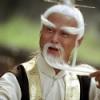
I HAD A DREAM! Of a Monk?He spoke to me!
Pai_Mei replied to DalTheJigsaw123's topic in General Discussion
Congratulations dear Qigong-brother, this is a very auspicious sign and shows two things: 1. Your subconscious is healthy and vital. 2. You are starting out connecting to a wider universe. The variety of experiences you can make in dreams are endless. Sometimes dreams are metaphorical and sometimes they are to be taken literally and sometimes they are just a "cleansing of the subconscious". I even had to battle once in a dream. As I shared this with my teacher he said the same thing I am now saying to you "Welcome on the path, my friend." PS: You can always gain great benefit of your dreams by reliving them in a meditation. Just get in trance with your preferred method and visit the monk again, just like you would do a meditation with guided imagery. What you also could do is to set an intent to meet this particular dream guide again while you are falling asleep. It may take some days with focussed intent in order to have this experience but it will work. You can also write the intent on a piece of paper and put it under your pillow or under your bed. -

I HAD A DREAM! Of a Monk?He spoke to me!
Edward M replied to DalTheJigsaw123's topic in General Discussion
Can't really say anything on your dream Leon apart from monks are thought to be symbolic of the higher self. Jetsun, your dream suggests to me that you have frozen emotions that are depriving your higher self of it's life within your conscious being. Just my interpretation, only you can know what it really is pointing to. Peace Ed

